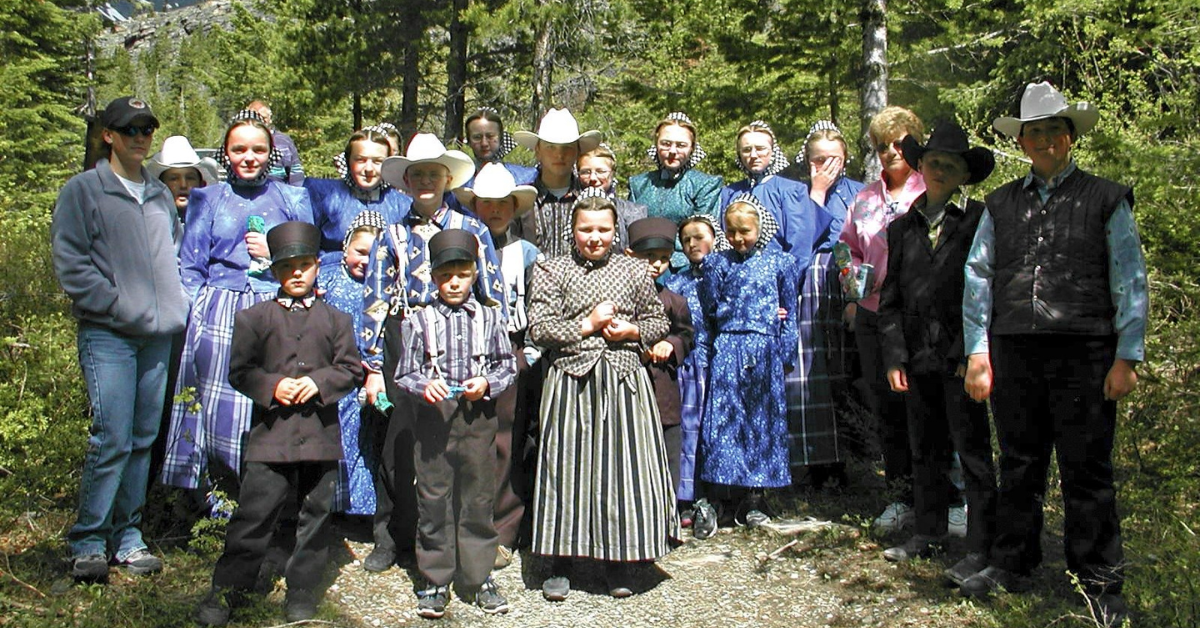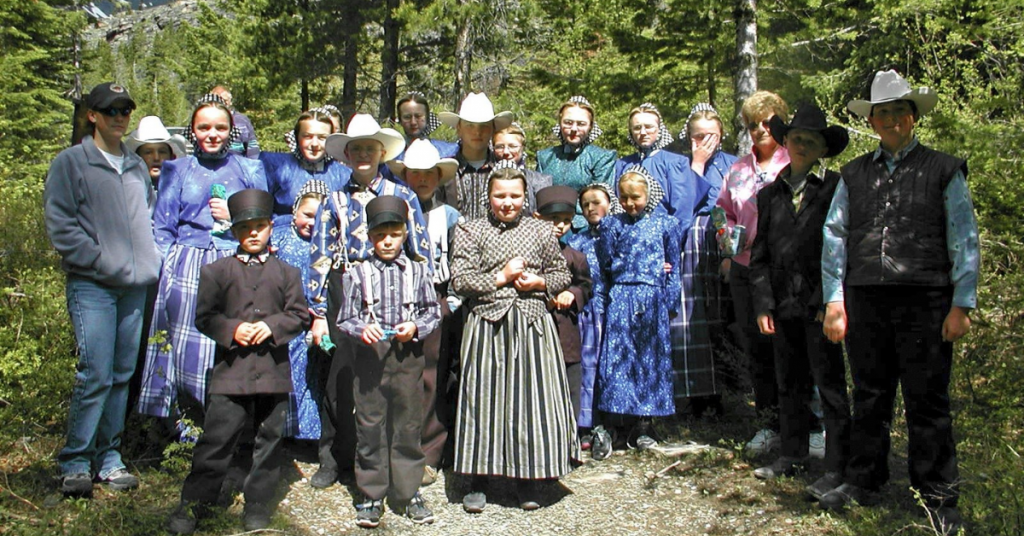
The Old Order Amish is one of America’s most fascinating and enduring communities. Known for their steadfast dedication to a lifestyle that eschews modern conveniences in favor of simplicity and tradition, the Old Order Amish offer a unique window into a way of life that prioritizes faith, family, and community above all else.
Key Takeaways
- The Old Order Amish are a distinctive and tightly-knit group known for their simple living, plain dress, and reluctance to adopt many conveniences of modern technology.
- Amish origins can be traced back to Europe in the 16th century, followed by significant migration to North America in the 18th century.
- The core beliefs and practices of the Old Order Amish are deeply interwoven with their daily lives.
- Education within the Old Order Amish community is tailored to prepare children for life within the community.
- The relationship between the Amish and technology is complex and often misunderstood.
- Despite their separation from much of modern society, the Old Order Amish have a surprisingly interconnected relationship with the wider community.
In this article, we’ll talk about their origins, beliefs, and the distinctive practices that not only define but also distinguish the Old Order Amish from other Amish groups. From their deep-rooted history that traces back to Europe, to the way they interact with the modern world today, we will uncover the layers of this tightly-knit community whose lifestyle challenges the pace of contemporary life and offers insights into a more deliberate and thoughtful way of living.
Who are the Old Order Amish?
The Old Order Amish are a distinctive and tightly-knit group known for their simple living, plain dress, and reluctance to adopt many conveniences of modern technology.
Originating from the Mennonite community in Switzerland during the 16th century, the Amish’s practice stems from the Anabaptist tradition which emphasizes adult baptism, nonviolence, and a separation from societal influence to maintain their values.
Today, the Old Order Amish strictly adhere to traditions passed down through generations, making them one of the most intriguing religious and cultural groups in North America. Their community emphasizes manual labor and humility, principles they believe bring them closer to God.
Unlike other Amish groups, the Old Order Amish maintain a more rigorous adherence to traditional practices. They reject modern utilities like electricity and automobiles more strictly than most other Amish communities, such as the New Order Amish or the Beachy Amish, who may use more modern conveniences while still holding to core Amish values. This strict separation from the outside world is pivotal in preserving their distinct way of life and values, setting them apart as one of the most traditionalist branches within the Amish community.
Historical Background
The Amish are a traditionalist Christian group with roots in the Anabaptist movement of the Protestant Reformation. Their origins can be traced back to Europe in the 16th century, followed by significant migration to North America in the 18th century. This migration was driven by a combination of religious persecution and the search for a place where they could practice their faith freely.
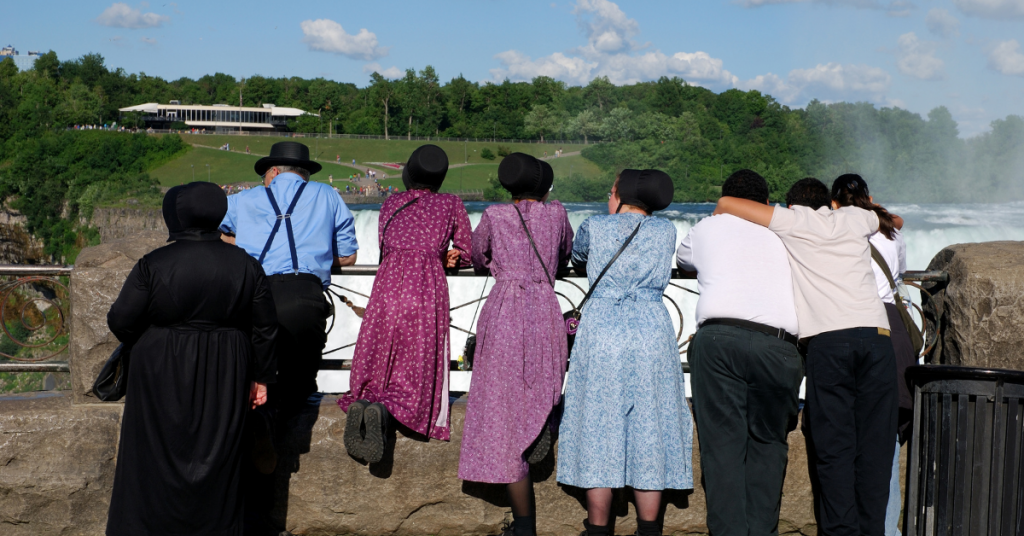
Origins of the Amish: Emergence in Europe and Migration to America
The Amish originated as a sect of Anabaptists in Zurich during the Protestant Reformation, driven by their beliefs in adult baptism and separation from state church practices. Persecution in Europe led them to seek refuge in regions such as the German Palatinate before eventually migrating to America.
The first significant wave of Amish migration to North America began in the early 18th century, notably in 1737, as they sought religious freedom and an opportunity to practice their faith without interference. They initially settled in Pennsylvania, attracted by the promises of religious tolerance in William Penn’s colony.
Migration continued throughout the 18th and 19th centuries, with Amish communities establishing themselves in various parts of the United States, particularly in Ohio and Indiana. This migration was often driven by the search for affordable farmland and the desire to maintain their agrarian lifestyle.
The Amish have shown remarkable adaptability and resilience, maintaining their cultural and religious practices while integrating into American society. Despite their initial struggles, they have grown significantly in numbers, especially since the 20th century, by establishing new settlements across the United States.
Formation of the Old Order Amish: Key Events and Figures
The Old Order Amish emerged from the Anabaptist movement in Europe, developing distinct practices and beliefs that led to their establishment as a unique religious group. The key events and figures in their formation highlight the interplay between religious conviction, community cohesion, and responses to external pressures.
Key Events
Schism and Separation
The schism that led to the formation of the Old Order Amish began with Jakob Ammann in the late 17th century. Ammann, a Swiss Anabaptist leader, advocated for stricter church discipline, including practices like foot washing, shunning (Meidung), and the rejection of buttoned clothing.
Migration to America
Seeking religious freedom, the Amish migrated to North America in the early 18th century. They initially settled in Pennsylvania, drawn by William Penn’s promise of religious tolerance.
Formation of Distinct Communities
Throughout the 19th and 20th centuries, the Amish faced internal divisions over issues such as the adoption of technology and religious practices. These disagreements often led to the formation of new Amish orders, including the New Order Amish and Beachy Amish.
Education and Legal Conflicts
A significant event in the history of the Old Order Amish was the U.S. Supreme Court ruling in Wisconsin v. Yoder (1972), which allowed Amish parents to withdraw their children from public schools after the eighth grade, affirming the community’s right to practice their educational beliefs.
Key Figures
Jakob Ammann
Ammann was instrumental in the formation of the Old Order Amish, advocating for a stricter interpretation of Anabaptist beliefs and practices, which led to the split from the Mennonites and the establishment of a separate Amish identity.
William Penn
Although not an Amish leader, Penn’s establishment of Pennsylvania as a haven for religious minorities provided the critical opportunity for the Amish to migrate to America and establish their communities.
Peter Stoll
A significant figure in the mid-20th century, Stoll was involved in the establishment of the Aylmer Amish community and later attempted to create an Old Order mission in Honduras, reflecting the community’s efforts to balance traditional practices with external influences.
Harvey Graber
Graber was a promoter of the Amish mission movement in the 1950s, which sought to engage more actively with broader society while maintaining Amish religious identity. This movement eventually led to some members transitioning to other Amish affiliations.
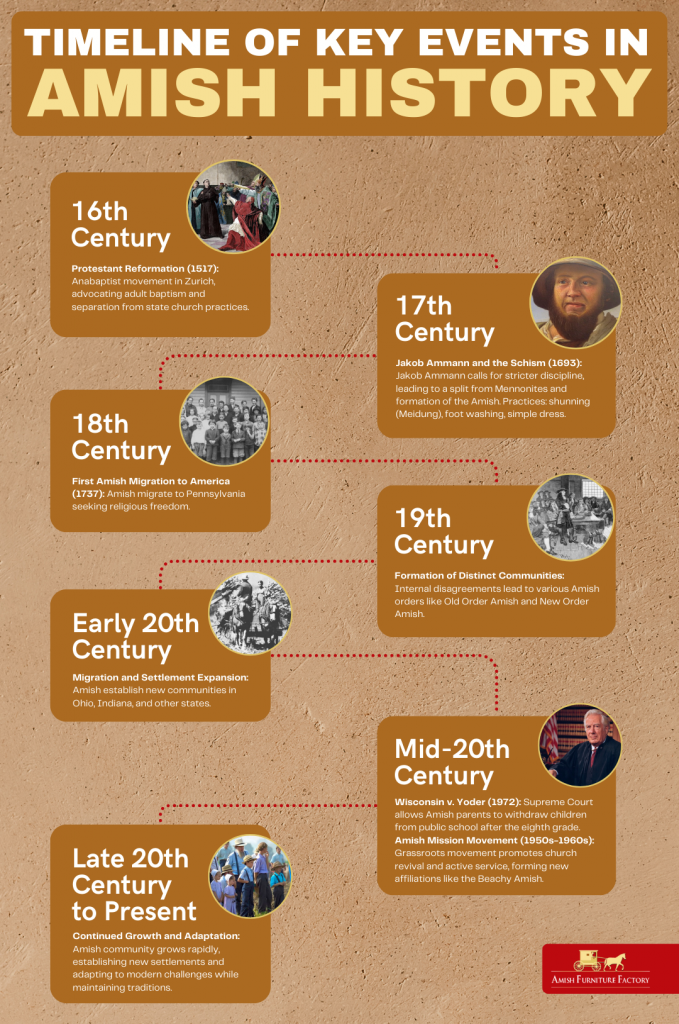
Sources
Core Beliefs and Practices
The core beliefs and practices of the Old Order Amish are deeply interwoven with their daily lives, reflecting their commitment to a lifestyle that prioritizes spiritual growth over conformity to modern society.
Fundamental Religious Beliefs of the Old Order Amish
At the heart of Old Order Amish beliefs is a dedication to the teachings of Jesus Christ and the scriptures. They emphasize humility, obedience, and simplicity, following the Ordnung—a set of oral traditions that govern various aspects of their life, including dress, technology, and social interactions.
The Ordnung varies slightly from community to community but is always centered on the principle of Gelassenheit, or yielding to a higher authority, which manifests in their pacifism, resistance to state authority, and a life removed from the secular world. This framework ensures that each member of the community adheres to the collective values that have preserved their way of life through centuries of external pressures.
Community Structure and Family Roles in Amish Society
Community and family are pillars of Amish society. The community not only serves as a religious group but also as a social network that supports each member from birth through to old age. Leadership within the community is typically male-dominated, with bishops, ministers, and deacons chosen by lot from among the men recognized for their piety and wisdom.
2““““““““““““““““““““““““““““““““““““““““““““““““““““““““““““““““““““““““““““““““““““““““““““““““““““““““““““““““““““““““““““““““““““““““““““““““““““““““““““““““““““““““““““““““““““““““““““““““““““““““““““““““““““““““““““““““““““““““““““““““““““““““““““““““““““““““““““““““““““““““““““““““““““““““““““““““““““““““““““““““““““““““““““““““““““““““““““““““““““““““““““““““““““““““““““““““““““““““““““““““““““““““““““““““““““““““““““““““““““““““““““““““““““““““““““““““““““““““““““““““““““““““““““““““““““““““““““““““““““““““““““““““““““““““““““““““““““““““““““““““““““““““““““““““““““““““““““““““““““““““““““““““““““““““““““““““““““““““““““““““““““““““““““““““““““““““““““““““““““““““““““““““““““““““““““““““““““““““““““““““““““““““““““““““““““““““““““““““““““““““““““““““““““““““““““““““““““““““““““““““““““““““““““““““““““““““““““““““““““““““““““““““““““““““““““““““““““““““““““““““““““““““““““““““““““““““““““““““““““““““““““““““““““““““““““““““““““““““““““““““““““““““““““““““““““““““““““““““““““““““““““““““““““““““““““““““““““““““““““““““““““““““““““““““““““““““““““““““““““““Families are large, often with six to ten children, and every member contributes to the household and community duties from a young age. Women primarily manage the household and care for children, while men handle the manual labor of farming and craftsmanship. This division of labor reinforces their values and ensures the transmission of skills and traditions to the next generation.
““““““““““““““““““““““““““““““““““““““““““““““““““““““““““““““““““““““““““““““““““““““““““““““““““““““““““““““““““““Lifestyle and Traditions`Lifestyle and Traditions
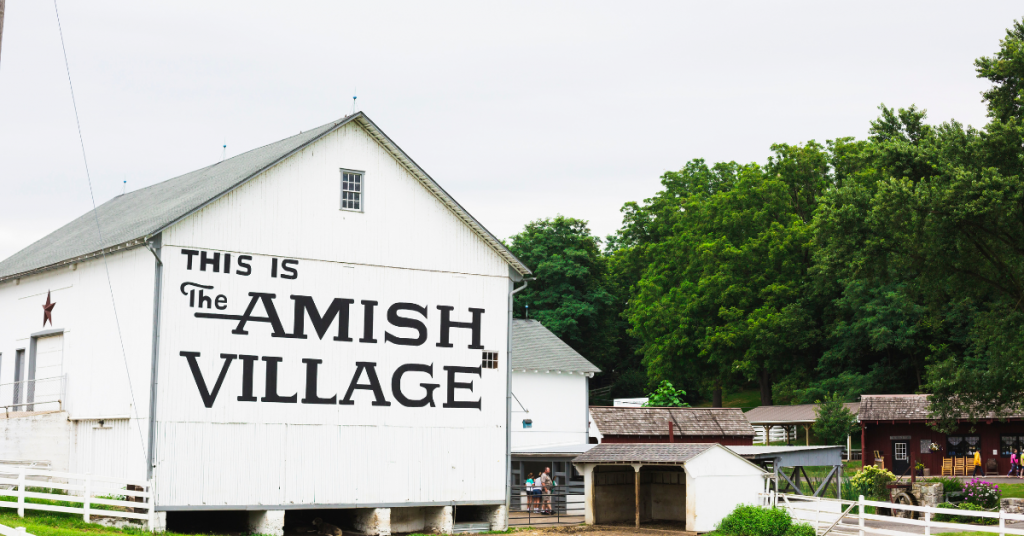
The Old Order Amish are renowned not only for their religious fervor but also for their unique lifestyle and traditions, which are crafted around principles of simplicity and self-reliance. These traditions are not relics of the past but living practices that define their daily lives and interactions with the world.
Simplicity and Self-Sufficiency
The concept of simplicity for the Old Order Amish extends beyond their plain clothing and unadorned homes; it’s a philosophy that influences every aspect of their existence. This simplicity is most apparent in their approach to living self-sufficiently.
They cultivate their own food, create their own clothes, and build their own homes, relying minimally on external markets. Such practices not only reinforce their separation from the complexities of modern society but also strengthen their community bonds—as everyone contributes to a shared way of life that values the collective over the individual.
Their self-sufficiency is also evident in their economic practices. Amish communities often operate independent businesses, such as furniture making, quilt crafting, or farming, which not only provide for their communities but also allow them to engage with the wider world on their own terms. This approach ensures they remain economically viable while steadfastly adhering to their ethical and spiritual principles.
Education and Rumspringa
Education within the Old Order Amish community is tailored to prepare children for life within the community, emphasizing practical skills over academic knowledge. Amish children attend school until the eighth grade in one-room schoolhouses run by the community.
The curriculum focuses on the basics of reading, writing, and arithmetic, along with lessons in Amish history and values. This education style reinforces community cohesion and ensures that the youth are well-prepared for their future roles in the community.
Rumspringa marks a significant phase in an Amish adolescent’s life. This period begins at around age 16, giving young Amish a chance to experience the world beyond their immediate community boundaries.
During Rumspringa, teenagers have more freedom to explore and sometimes engage with technologies and social practices typically avoided by the Amish. The purpose is to ensure that young adults make a knowledgeable decision to either commit to baptism within the Amish church or leave the community. Despite misconceptions, most choose to return and embrace their heritage and lifestyle permanently.
Technology and Modernity
The relationship between the Amish and technology is complex and often misunderstood. While they are known for their general rejection of modern conveniences, this is not an absolute. The Amish evaluate technology on how it affects their community and values.
For instance, while cars and public electricity are generally avoided because they might lead to unwanted social changes, many communities use diesel generators, hydraulic power, or solar panels in ways that maintain their separation from the world but allow for necessary efficiency in their work.
This selective adoption of technology ensures that their engagements with modernity are thoughtful, maintaining the integrity of their communal life and spiritual values. Thus, while they may appear to live in the past, the Amish are actually making very conscious choices about their future, balancing tradition and change with careful consideration.
Demographics and Distribution

Understanding the demographics and distribution of the Old Order Amish is crucial in appreciating their significant impact on regions where they live and their growth patterns over the years.
Population Statistics
As of 2024, the Old Order Amish population in the United States is estimated to be approximately 383,565 individuals, distributed across 32 states, as well as parts of Canada and South America. This population is divided among 638 distinct communities and 2,915 church districts.
Pennsylvania holds the largest Amish population, with around 87,000 people, followed by Ohio with about 81,700, and Indiana with approximately 62,800. Other states with significant Amish populations include Wisconsin, New York, and Michigan, each hosting over 17,000 Amish residents.The Amish community has experienced consistent growth, primarily due to their high birth rates and strong community retention. The average Amish family has about five children, and it is common for youth to remain within the community, with about 85% joining the church as adults.
Regional Communities
The Old Order Amish communities are predominantly located in Pennsylvania, Ohio, and Indiana, but they have established settlements in many other states across the United States and parts of Canada. Each of these communities varies slightly in their practices and interpretations of the Ordnung, leading to a rich diversity within the Amish as a whole.
For example, while some may be more stringent about technology use, others might be slightly more permissive, reflecting adaptations to different geographical and social environments. These regional differences underscore the adaptability and resilience of the Amish, even as they strive to maintain their core principles and lifestyle.
Difference Between Old Order Amish and Other Amish groups
While the term “Amish” may evoke a singular image of horse-drawn buggies and plain clothing, there are significant variations among the groups. The Old Order Amish represent the most traditionalist of these groups, adhering closely to the practices and lifestyle choices established in the 19th century.
In contrast, other Amish groups, such as the Beachy Amish or Amish Mennonites, have embraced more modern conveniences, including the use of cars, electricity, and more modern attire. These differences are primarily driven by differing interpretations of the Ordnung, the unwritten code that dictates lifestyle choices, with the Old Order maintaining stricter adherence to separate themselves from the influences of the modern world.
Here’s a more in-depth comparison:
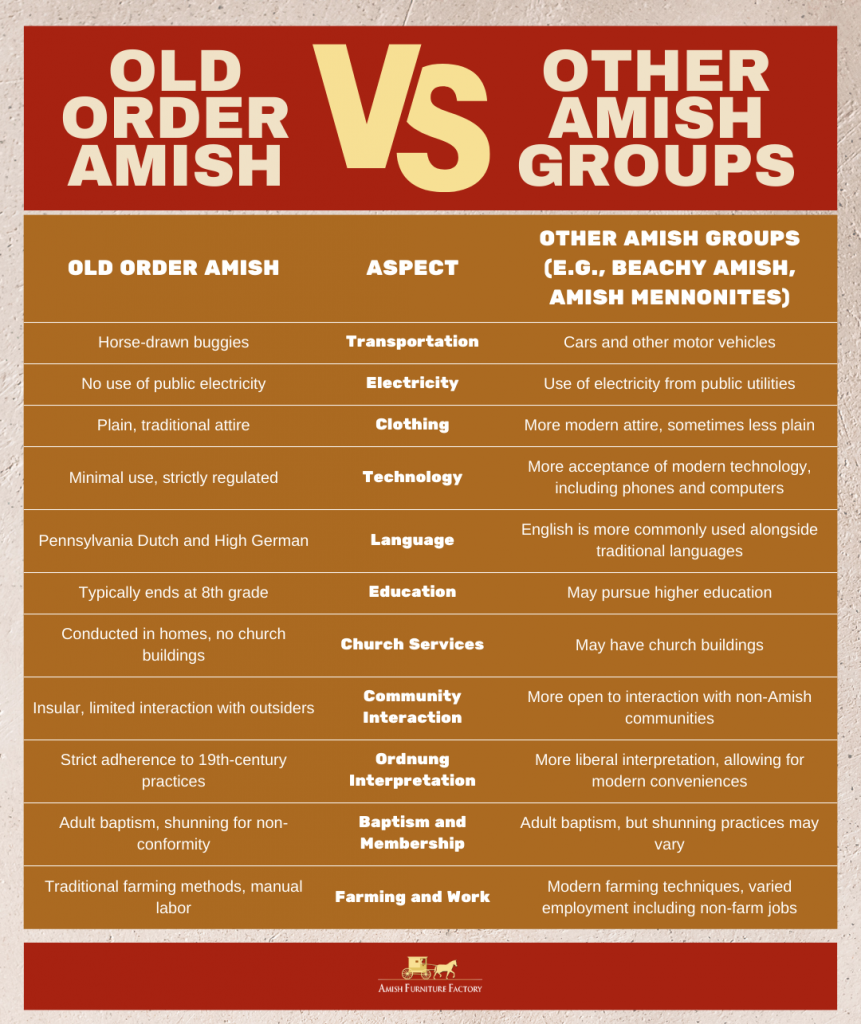
Interactions with Wider Society
Despite their separation from much of modern society, the Old Order Amish have a surprisingly interconnected relationship with the wider community, particularly through economic contributions and navigating societal norms.
Economic Contributions of the Old Order Amish to Local Economies
The Old Order Amish contribute significantly to local economies, especially in rural areas where they are concentrated. Through their industries such as agriculture, furniture making, and crafts, they not only sustain their community but also attract tourism, which benefits the wider area economically.
Amish markets and the high demand for Amish-made goods, known for their quality and craftsmanship, inject valuable commerce into local markets. Their approach to business, which emphasizes fairness and community welfare, often sets a standard in their local economies for ethical business practices.
Legal and Social Issues
Living in a society that is vastly different from their own beliefs presents unique legal and social challenges for the Old Order Amish. They often find themselves in discussions and sometimes disputes over issues such as education, zoning laws, and technology use.
For instance, the Amish have sought exemptions from certain state and federal regulations that conflict with their religious practices, such as those requiring photo IDs and Social Security numbers.
Successfully navigating these challenges involves a delicate balance of compromise and firm adherence to their principles, illustrating their resilience and adaptability in maintaining their way of life in a modern legal framework.
Final Thoughts
The Old Order Amish represent a unique and enduring community that has steadfastly maintained its traditional way of life in the face of modernity. Through their deep-rooted beliefs, commitment to simplicity, and strong communal ties, they offer a fascinating glimpse into a lifestyle that prioritizes faith, family, and community above all else.
Their resilience and adaptability have allowed them to preserve their cultural heritage while contributing significantly to the local economies where they reside. Understanding the Old Order Amish provides valuable insights into the possibilities of living deliberately and thoughtfully in a rapidly changing world.
FAQs
Are there still old orders in Amish?
Yes, the Old Order Amish continue to thrive across the United States, particularly in states like Pennsylvania, Ohio, and Indiana. These communities hold steadfast to their traditional practices, resisting much of the modern technology and lifestyle changes that characterize contemporary society.
What are the rules of the Old Order Amish?
The rules of the Old Order Amish, or the Ordnung, dictate nearly every aspect of their life, including dress, technology use, and social behaviors. Key rules involve simplicity in attire, prohibition against owning automobiles, and the use of horse-drawn buggies for transportation. The Ordnung varies slightly between communities but is always aimed at preserving the Amish way of life and preventing outside influences.
Can outsiders join the Old Order Amish community?
Joining the Old Order Amish community is rare but not impossible. Outsiders, referred to as “seekers,” must undergo a rigorous process of learning, adaptation, and acceptance, including adopting the Amish lifestyle, language (Pennsylvania Dutch), and religion. The final step is baptism into the Amish church, after which they are expected to fully adhere to the community’s norms and practices.
